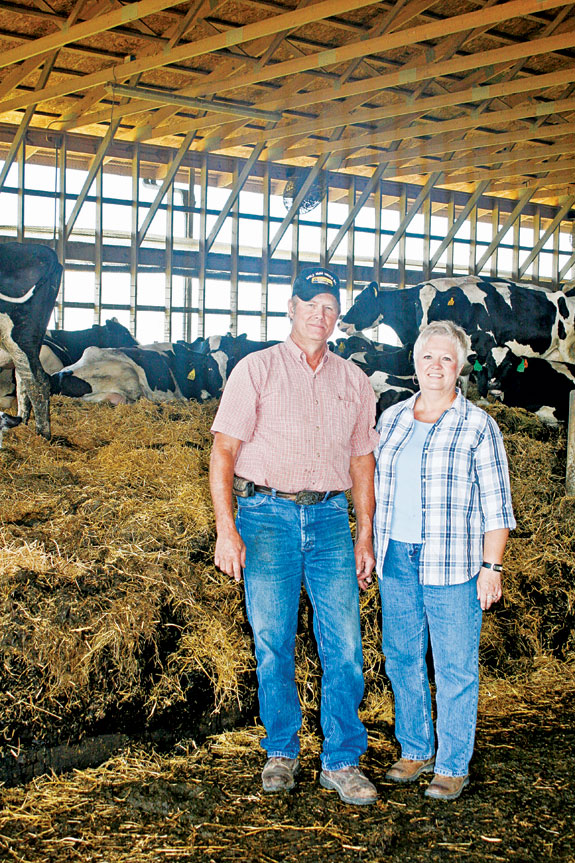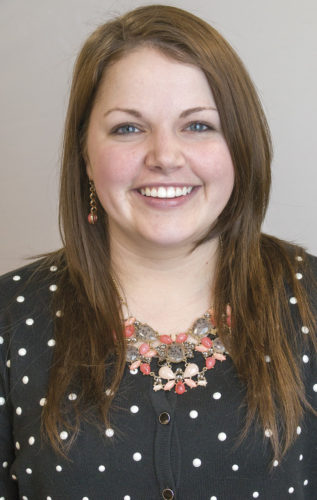to jump to the article. Summary: The August 11th issue, with a topic of facilities and business planning, highlighted a bedded-pack barn in western Ohio that's providing optimal cow comfort. Producer Doug Boots joined forces with consultant Don Themm in Michigan to design a barn that keeps cows cool in the summer and warm in the winter with minimal labor. Because this article was so popular, we asked Boots a follow-up question: Q: Since the article appeared, has anyone visited your place to see the barn for themselves? What has been some of your advice? A: Since our farm was featured, we have received numerous inquiries about the facility. We received calls from interested dairymen from coast to coast. Many dairymen from the Grand Lakes St. Marys watershed area in Mercy County, Ohio, visited and expressed a real interest in the facility because they are experiencing enforcement of stricter government regulations regarding manure runoff. Many of the dairymen had freestall barns for their housing and were interested in the use of loose housing (manure pack) facilities.
Those farmers were able to see firsthand how the barn could not only provide comfortable housing for the cows but also provide a source of manure storage for several months. Our barn was designed for a 12-month storage capacity. We have it scheduled to be cleaned out during the fall months after harvest.
—Doug Boots, dairy producer, Ohio
[Click here or on the image above right to see the full list of the Top 25 articles of 2011. Click here to see the list from 2010.]
ARTICLE

In 2008, Doug Boots of West Liberty, Ohio, was ready to make some changes in his dairy operation. He wanted to expand the milking herd from 100 cows to 200 or more and was ready to put in a new facility to accommodate them. He wanted the ultimate in cow comfort and wasn’t sold on the idea of a compost-bedded pack barn, where he would constantly have to stir up the compost material.
That’s when Ron Meyer, owner of Pro-Health Microbials and Feeds, connected Boots with Don Themm.
Themm has more than 50 years of experience, having worked for companies such as Babson Brothers, manufacturers of the Surge Milking Machine, and Jamesway Farm Equipment. In the late 1980s, Themm struck out on his own, developing a consulting business centered on dairy system designs.
Since retiring from Michigan State University in 2008, Howard Person joined the business, bringing with him more than 35 years of experience in providing livestock with optimal housing and environments.
About five years ago, Themm began pitching the “Don’s Cow Palace” design, which features a bedded straw pack built at a “comfort slope,” the degree of which varies depending on the type and location of barn.

Design specifics
There were a number of things that Boots liked about the design right away, including the fact that the cows were only 16 feet from the feedbunk and spend little time on concrete.
The pair began formulating plans and collaborating. The first step was putting up the new barn with a cement floor, designed to house 225 cows.
“Don wanted to plan for 700 cows. He said, ‘You’re going to like it so much that you’ll want three more just like it,’” Boots says.
He estimates the total cost for putting up the barn worked out to $1,800 per cow, a figure below half the average price of putting in a new freestall barn.
The farm is located just a few miles from the highest point in Ohio, at 1,549 feet above sea level. This is quite notable, considering most of Ohio spreads out flatly at 850 feet or below. So when the new barn was built on top of a hill, with airy, eight-foot-tall siding, the sometimes harsh winter conditions in western Ohio had to be taken into consideration.
Boots says the large dairy curtain on the exterior of the barn rarely has to be used because the bedded straw pack absorbs the cows’ body heat and keeps the herd warm even in severe weather.
In fact, in January 2009, when Boots moved his herd into the new facility, he says his cows were content and comfortable, despite the frigid temperatures.

The herd is kept just as comfortable in the warm summer months with a steady breeze, along with a row of fans toward the outside of the barn and misters behind the feedbunk.
Boots says he’d like to install another row of fans more toward the middle of the bedded pack, an addition that would help increase air movement on stale days and help to absorb moisture from the pack.
The barn is bedded twice a day with a straw chopper, a process that takes about 15 minutes with his current equipment. Alleys are scraped twice a day as well, but the pack itself has not been cleaned out once since its installation.
Why? It doesn’t need to be, says Boots.
“We found that we didn’t have to clean it out,” he says. “It stays the same depth as the straw breaks down, and the cows continually work off the front of the pack into the scrape alley.”
Themm is so confident about his “Don’s Cow Palace” design that he believes this setup will replace freestall barns in the next five to seven years. This is a bold statement, considering the fact that Themm was involved with early designs of freestalls, collaborating with Michigan State and equipment companies.

Surprising benefits
Boots is certainly sold on the design. In fact, he’s noticed a number of additional benefits in this type of barn over a freestall system.
One advantage is being able to observe the cows.
“I can see every cow as I’m walking down through the barn,” he says. This has enabled him to monitor heat detection better and has contributed to his herd’s first conception rate increasing from 72 percent to now over 80 percent.
He was also pleasantly surprised at the jump in milk production after moving the cows into the new barn.
“Within two weeks, we gained 10 pounds of milk production per cow,” Boots says.
He attributes the production jump to both increased cow comfort and the fact that the cows are closer to the feedbunk.
Another plus has been the manure itself. When alleys are scraped twice a day, the manure is stored in a pit and eventually is used as fertilizer.
“It doesn’t come out like a bedded pack like I expected,” Boots explains. “It’s easy to spread and spreads evenly – it looks like compost material and really homogenizes with the soil.”
Themm says the straw-laden manure tends to build up the humus and organic matter in the soil, making it more productive and nutrient-rich.
What’s next?
Despite Themm’s urging to build “three more just like it,” Boots is content with his one new barn. His future plans do include updating his milking facilities to put in a new parlor within the next three years.
“If I had the help, though, I’d put up another barn, put in the new parlor and milk 500 cows,” Boots says.
In the current setup, Boots runs the farm with wife, Vicky; son, Brent; and 11-year-old grandson, Noah, along with two full-time non-family employees. In addition to the dairy herd, the family farms 1,200 acres and custom feeds 1,100 hogs.
One of the biggest challenges to commercial farming in an area like West Liberty is finding the labor to be able to justify operation expansions.
Themm’s unique design enabled the family to double the herd size and set new standards for cow comfort, a move that Boots believes will continue to maintain and increase milk production and herd longevity. PD
Barn designer Don Themm can be reached at donaldthemm@gmail.com or (800) 808-4366 .
Photos by Emily Caldwell.
-
Emily Caldwell
- East Coast Editor
- Email Emily Caldwell






